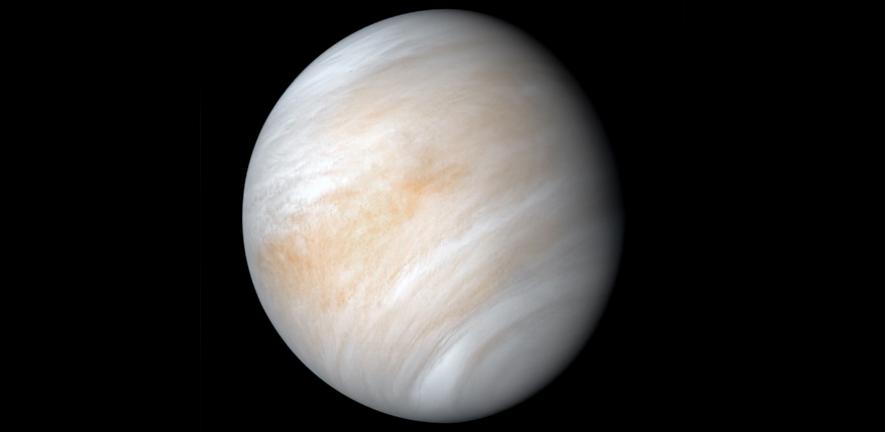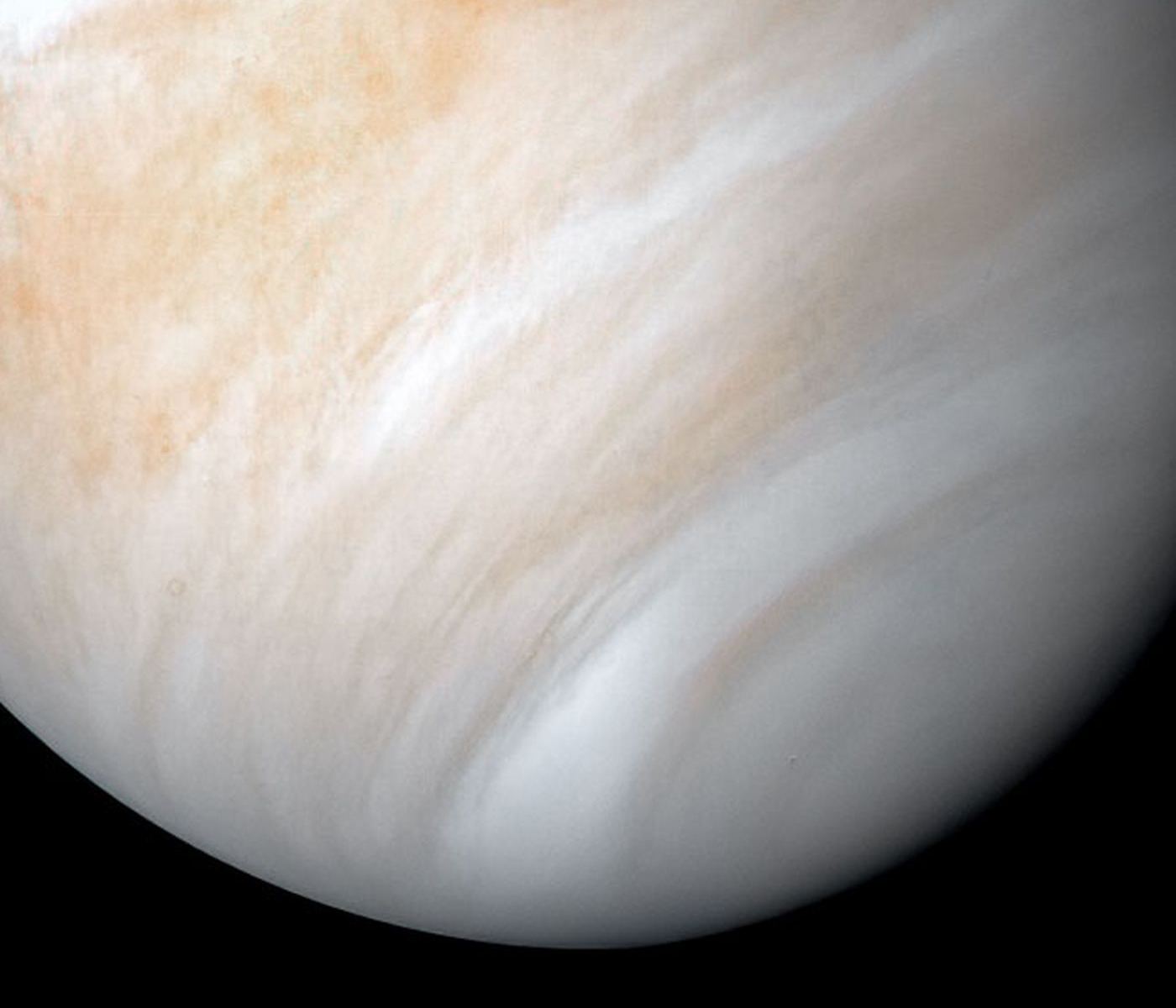Universe Today has had the incredible opportunity of exploring various scientific fields, including impact craters, planetary surfaces, exoplanets, astrobiology, solar physics, comets, planetary atmospheres, planetary geophysics, cosmochemistry, meteorites, radio astronomy, extremophiles, organic chemistry, black holes, cryovolcanism, planetary protection, dark matter, supernovae, neutron stars, and exomoons, and how these separate but unique all form the basis for helping us better understand our place in the universe.
Continue reading “Evolutionary Biology: Why study it? What can it teach us about finding life beyond Earth?”Venus has Clouds of Concentrated Sulfuric Acid, but Life Could Still Survive

The surface of Venus is like a scene from Dante’s Inferno – “Abandon all hope, ye who enter here!” and so forth. The temperature is hot enough to melt lead, the air pressure is almost one hundred times that of Earth’s at sea level, and there are clouds of sulfuric acid rain to boot! But roughly 48 to 60 km (30 to 37.3 mi) above the surface, the temperatures are much cooler, and the air pressure is roughly equal to Earth’s at sea level. As such, scientists have speculated that life could exist above the cloud deck (possibly in the form of microbes) as it does on Earth.
Unfortunately, these clouds are not composed of water but of concentrated sulfuric acid, making the likelihood that life could survive among them doubtful. However, a new study led by scientists from the Massachusetts Institute of Technology (MIT) reveals that the basic building blocks of life (nucleic acid bases) are stable in concentrated sulfuric acid. These findings indicate that Venus’ atmosphere could support the complex chemistry needed for life to survive, which could have profound implications in the search for habitable planets and extraterrestrial life.
Continue reading “Venus has Clouds of Concentrated Sulfuric Acid, but Life Could Still Survive”High Altitude Life Can’t Explain the Trace Gases in Venus’ Atmosphere
The planet Venus is one of the most inexplainable and mysterious planetary objects in our solar system as its surface is beyond inhospitable for us fragile humans with temperatures at a searing 475 degrees Celsius (900 degrees Fahrenheit) and surface pressures more than 90 times that of Earth. However, its atmosphere is quite a different story as its temperature varies considerably ranging from -143 degrees Celsius (-226 degrees Fahrenheit) at night to 37 degrees Celsius (98 degrees Fahrenheit) in the daytime, and varies based on altitude, as well.
Continue reading “High Altitude Life Can’t Explain the Trace Gases in Venus’ Atmosphere”Life Could Make Habitable Pockets in Venus’ Atmosphere

The tantalizing possibility that life exists in the clouds of Venus is once again causing a stir amongst planetary scientists this week. Researchers out of the Massachusetts Institute of Technology, Cardiff University, and the University of Cambridge have proposed that some longstanding ‘anomalies’ in the composition of Venus’ atmosphere might be explained by the presence of ammonia. But ammonia itself would be a strange compound to discover there, unless some unknown process – such as biological life – was actively producing it. Perhaps more intriguingly, ammonia can remove the acidity from Venus’ hostile cloud-tops, suggesting that an airborne, ammonia-producing microbe might have evolved the ability to turn its hostile surroundings into something habitable.
Continue reading “Life Could Make Habitable Pockets in Venus’ Atmosphere”Bad News, Life Probably can’t Exist on Venus. Good News, it Could be in Jupiter’s Clouds
For decades, scientists engaged in the search for life in the Universe (aka. astrobiology) have focused on searching for life on other Earth-like planets. These included terrestrial (aka. rocky) planets beyond our Solar System (extrasolar planets) and ones here at home. Beyond Earth, Mars is considered to be the most habitable planet next to Earth, and scientists have also theorized that life could exist (in microbial form) in the cloud tops of Venus.
In all cases, a major focal point is whether or not planets have large bodies of water on their surfaces (or did in the past). However, a new study led by a research team from the UK and German (with support from NASA) has shown that the existence of life may have less to do with the quantity of water and more to with the presence of atmospheric water molecules. As a result, we may have better luck finding life on Jupiter’s turbulent cloud deck than Venus’.
Continue reading “Bad News, Life Probably can’t Exist on Venus. Good News, it Could be in Jupiter’s Clouds”Scientists Have Re-Analyzed Their Data and Still See a Signal of Phosphine at Venus. Just Less of it
In September, an international team announced that based on data obtained by the Atacama Millimeter-submillimeter Array (ALMA) in Chile and the James Clerk Maxwell Telescope (JCMT) in Hawaii, they had discovered phosphine gas (PH3) in the atmosphere of Venus. The news was met with its fair share of skepticism and controversy since phosphine is considered a possible indication of life (aka. a biosignature).
Shortly thereafter, a series of papers were published that questioned the observations and conclusions, with one team going as far as to say there was “no phosphine” in Venus’ atmosphere at all. Luckily, after re-analyzing the ALMA data, the team responsible for the original discovery concluded that there is indeed phosphine in the cloud tops of Venus – just not as much as they initially thought.
Continue reading “Scientists Have Re-Analyzed Their Data and Still See a Signal of Phosphine at Venus. Just Less of it”Venus Held Onto its Water Surprisingly Well During its History

Named for the ancient goddess of fertility, the planet Venus could not be more hostile to life as we know it. Aside from being the hottest planet in the Solar System, Venus has also an atmosphere that is 92 times denser than Earth’s, and regularly experiences sulfuric acid rain. But as we’ve learned from multiple surveys, Venus was once a much milder climate and even had vast oceans on its surface.
For astronomers and geologists alike, the burning question is, how much of its water did Venus hold onto during this massive transition? According to research presented by Moa Persson of the Swedish Institute of Space Physics (IRF), Venus actually retained most of its water over the past 4 billion years. Contrary to what researchers previously thought, Venus lost only a small amount of its water to a runaway Greenhouse Effect.
Continue reading “Venus Held Onto its Water Surprisingly Well During its History”Did Scientists Just Find Signs of Life on Venus?

A team of scientists has just published a paper announcing their discovery of a peculiar chemical in the cloudtops of Venus. As far as scientists can tell, this chemical, called phosphine, could only be produced by living processes on a planet like Venus. So the whole internet is jumping on this story.
But did they find signs of life? Or is there another explanation?
Continue reading “Did Scientists Just Find Signs of Life on Venus?”



